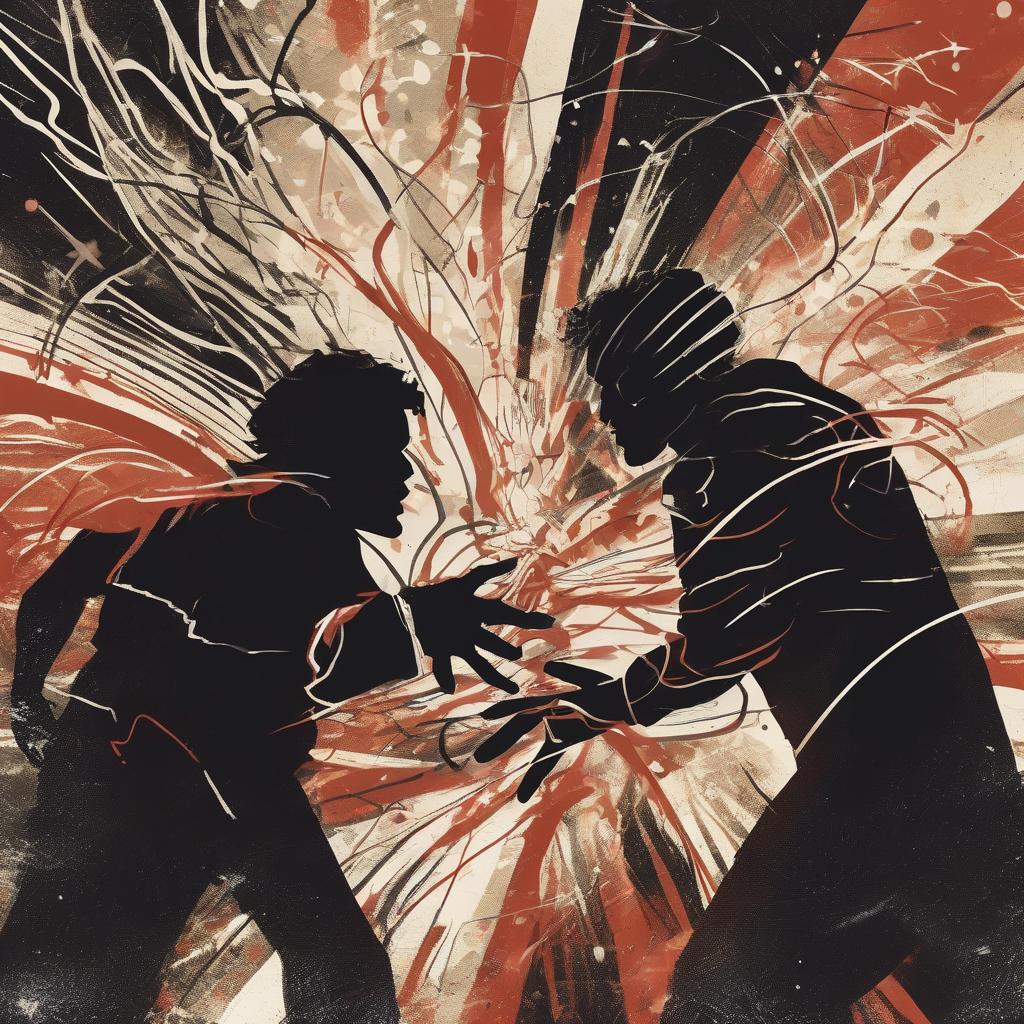Fighting. We see it in movies, on the streets, in sports, and sometimes even in our own lives. It’s one of those raw forms of human interaction that can be both destructive and strangely captivating. Whether it’s a heated debate or a physical brawl, fighting takes many shapes and forms. But what really drives it? And how do people navigate this complex social dynamic?
The Many Faces of Fighting
Fighting isn’t just about physical altercations. It encompasses a spectrum of confrontations, from verbal arguments to full-blown combat sports. People engage in fighting for various reasons—some seek power, others defend their honor, and some just get caught up in the moment.
Why Do People Fight?
It’s a loaded question, right? People fight for myriad reasons. Some fight to protect their loved ones, while others may fight due to a lack of communication or to assert dominance. In certain contexts, it becomes a cultural or societal norm. For more details on the different contexts and historical perspectives, check this Wikipedia article on Fighting.
Think about those arguments you’ve had that escalated. Was it really about the dishes left in the sink, or was there something deeper? Often, fights are just the surface-level expression of underlying tensions or unspoken grievances.
The Role of Fighting in Sports
Combat sports like boxing, MMA, and wrestling harness the aggressive energy of fighting into structured competition. These arenas become places where skill, strategy, and sometimes brute force collide. Spectators find thrill in these bouts, as fighters push their limits, physically and mentally. But these sports aren’t just about beating the opponent. They’re about discipline, resilience, and respect for one’s adversary.
Even in non-combat sports, skirmishes occur. Hockey, for example, is notorious for its on-ice brawls. It’s not just chaos—there’s an unspoken code, a sort of honor among fighters, ensuring things don’t get completely out of hand.
The Psychological Impact of Fighting
Fighting can have profound psychological effects on those involved. It can lead to stress, anxiety, or even trauma. For others, it might be a release, a cathartic experience that helps them feel alive or in control.
Stress and Trauma
Let’s be real. When you’re embroiled in a fight, your body goes into overdrive. Adrenaline pumps through your veins, your heart races, and your muscles tense. This fight-or-flight response, while useful in dangerous situations, can be harmful if triggered too often.
Long-term exposure to violent situations can lead to psychological trauma. Events that are particularly violent or unexpected can scar individuals mentally, sometimes leading to disorders like PTSD.
Fighting as Catharsis
For some, fighting acts as a release valve for pent-up emotions. It’s not uncommon for people to feel a sense of relief or calm after a confrontation. This release can sometimes lead to a clearer mindset, allowing individuals to address underlying issues more effectively.
Cultural Perspectives on Fighting
Different cultures have different attitudes towards fighting. In some societies, dueling or combat sports are celebrated, while in others, they’re frowned upon or even outlawed. The reasons behind these cultural norms are as varied as the societies themselves.
Historical Context
Throughout history, fighting has been a means of settling disputes, both personal and political. Dueling was once an accepted practice among European aristocrats, a way to settle matters of honor. In contrast, many Eastern cultures have historically emphasized conflict resolution through dialogue and diplomacy.
Modern-Day Perceptions
Today, fighting is often seen in a negative light, particularly when it leads to violence and harm. However, there’s also an appreciation for its controlled forms, such as in sports and martial arts, where it becomes a disciplined practice rather than a destructive force. For more insights on how fighting is viewed globally today, take a look at the BBC’s coverage on fighting.
The Ethics of Fighting
Fighting raises ethical questions. Is it ever justified? Where do we draw the line between self-defense and aggression? These are questions that don’t have easy answers but are worth pondering.
Self-Defense and Morality
Most agree that fighting in self-defense is morally acceptable. But what about preemptive strikes? Or retaliatory violence? These scenarios blur the lines between right and wrong.
In some philosophies, like just war theory, violence is justified only when it meets certain criteria, such as necessity and proportionality. Applying these principles to personal conflicts can be challenging but provides a framework for ethical considerations.
Fighting and Legal Implications
Laws around fighting vary. In many places, physical altercations can lead to legal consequences, including fines or imprisonment. Self-defense laws provide some leeway, but navigating these legal intricacies can be complicated.
Conflict Resolution: Alternatives to Fighting
While fighting might sometimes seem inevitable, there are alternatives. Conflict resolution techniques can help de-escalate situations before they turn violent.
Communication and Mediation
Open communication is key. Understanding and addressing the root cause of conflict can often prevent it from escalating into a fight. Mediation offers a structured environment where both parties can express their grievances and work towards a resolution.
Role of Education
Teaching conflict resolution skills from a young age can have lasting impacts. Schools implementing programs that focus on emotional intelligence and problem-solving can help reduce incidents of violence and promote peaceful interactions.
The Future of Fighting
As society evolves, so does the nature of fighting. With advancements in technology, new arenas have emerged—cyber confrontations, virtual reality combat, and more. These raise new questions about ethics, impact, and the role of fighting in our digital age.
Technological Influence
Technology has introduced new tools for both conflict and resolution. Social media platforms, for instance, can amplify disagreements but also offer spaces for dialogue and understanding.
Shifting Attitudes
There’s a growing awareness and push towards non-violent conflict resolution. As these attitudes become more mainstream, the hope is for a future where fighting, in its destructive forms, becomes less common.
For those interested in exploring more about the dynamics of fighting and its place in contemporary society, the Fighting category on Nibbly Note offers a wealth of articles and perspectives.
FAQs
- Why do some people enjoy fighting? Honestly, it’s a mix. Adrenaline, the thrill, sometimes it’s about proving something to themselves or others.
- Can fighting ever be healthy? In controlled settings like sports, sure. It can be a way to channel aggression positively.
- What about fighting in relationships? It’s common but not ideal. Better to resolve issues through communication and understanding.
- How can I stop getting into fights? Recognize triggers, practice patience, maybe even seek out conflict resolution training.
- Is avoiding a fight always the best option? Not always. Sometimes standing up for yourself is necessary, but it’s crucial to choose battles wisely.
And there it is—fighting in all its complex, sometimes bewildering glory. It’s a part of the human experience that, while not always pretty, often tells us more about ourselves and society than we might initially realize.

